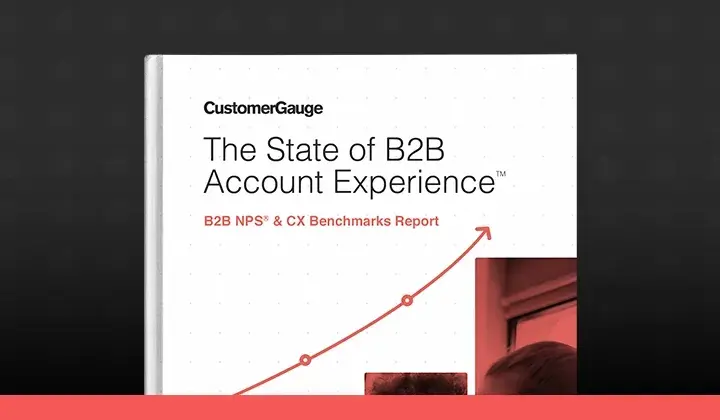In our eBook 'The Fine Art of Surveying', we discuss how relational and transactional surveys serve different purposes and therefore need to be approached differently.
Relational Net Promoter Score (NPS) surveys need to be sent quarterly to get a complete and continuous understanding of your customer’s ‘health’.
We recommend sending them every quarter to see the highest impact on customer retention.
We also suggest sending them at strategic times in the year, like shortly before quarterly reviews, so you have action points to discuss, or a few months before contract renewal so you can make a last-ditch effort to turn around churning customers.
Transactional NPS surveys are more simple. They should be sent immediately after the event trigger you’d like to understand (0-10 days depending on the touchpoint). But, be careful of sending them too often, they should be used strategically to avoid survey fatigue.
Let's look at both of these in greater depth and discuss what the data is telling us on frequency, time of year, and time of day to send your NPS surveys.
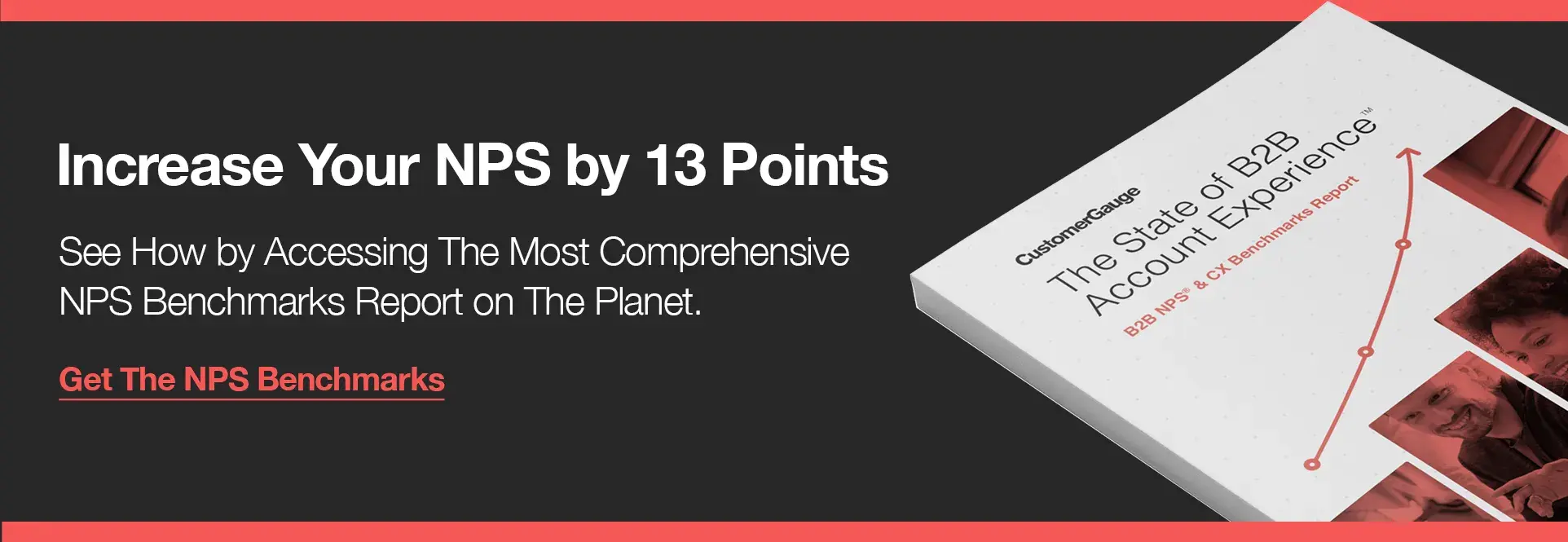
When to Send an NPS survey — The Relational NPS Survey
A relational survey is a survey where you get a pulse-check of the overall relationship between your customers and your company. They investigate your customer’s loyalty to your company as a whole — which contrasts with transactional surveys which measure your customer’s experience at a specific interaction or touchpoint rather than an ‘overall’ experience.
As we discovered in our annual CX benchmarking research, from a financial perspective, the most successful Net Promoter programs use short and frequent relationship surveys.
How Frequently Should Relational Surveys Be Sent?
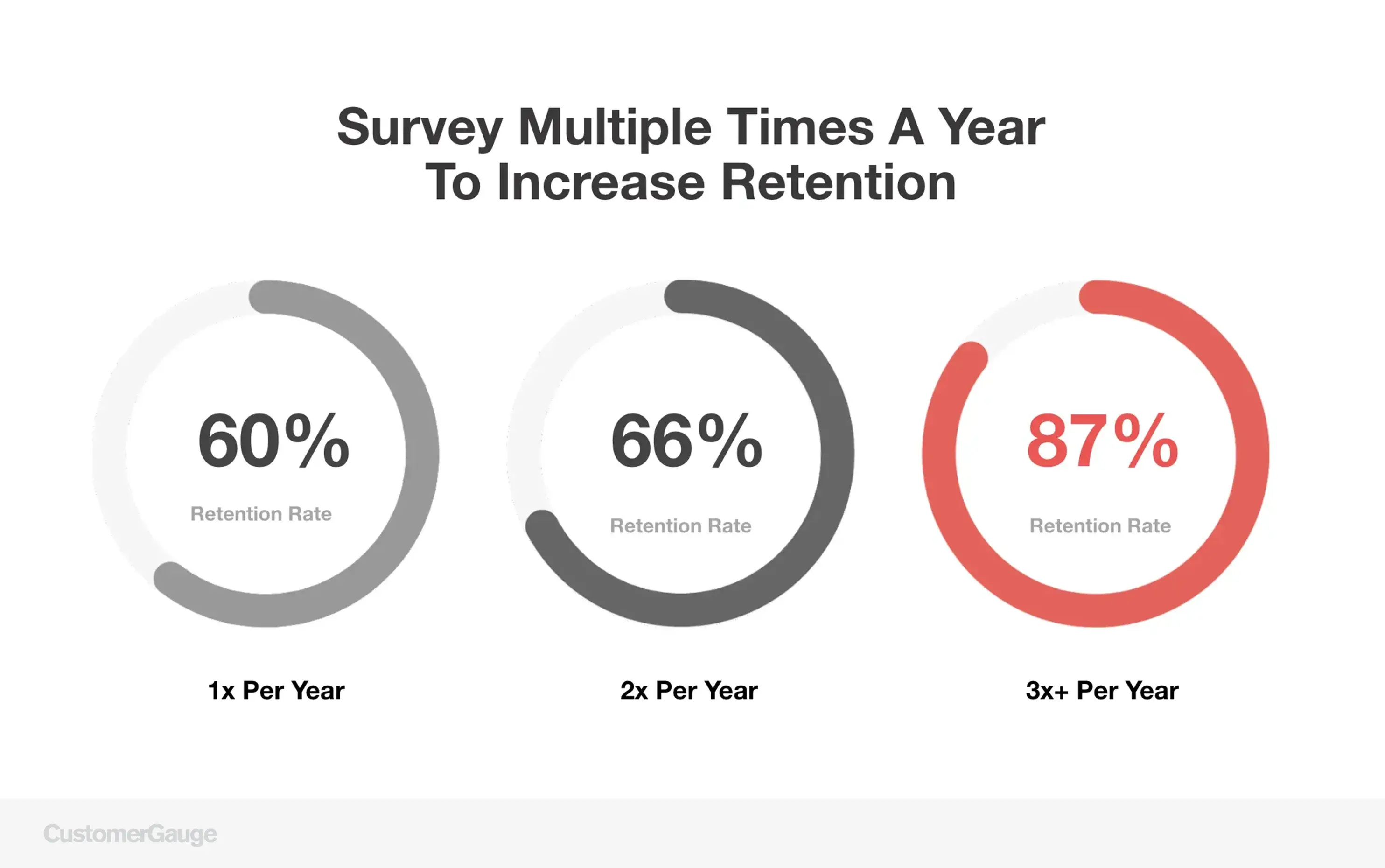
As the chart above shows, companies that survey their customers quarterly are shown to have the highest average retention increase.
Any less than 2-4 times per year is asking for trouble; a lot can change over the course of a year.
If you are only asking for feedback once throughout that time period, you are most likely missing out on the full picture of the customer’s journey and interactions with your organization.
You could even gain and lose a customer in less than a year, which is a situation in which yearly sending might mean they never received a chance to submit survey feedback.
That’s churn you could have prevented.
The only exception I’d make to this is if you have a business where you only interact with your customers once per year. If nothing has changed on either your or the customer’s end since the last survey, then it makes little to no sense to send another survey.
But for the vast majority of companies, sending at least twice per year would likely be a best-practice minimum.
Any more frequently than quarterly (4 times per year), and you are probably at great risk of survey fatigue, especially if you also send transactional surveys.
However, this doesn’t necessarily mean you should jump right into doing quarterly relationship surveys. It’s also important to maintain a high response rate, and if your customers aren’t accustomed to receiving quarterly surveys, they may suffer from survey-fatigue, causing your response rate to suffer.
In order to send quarterly surveys, you also, as a company, need to clearly demonstrate to your customers the value of taking a survey with that frequency.
You can achieve this by closing the loop quickly with thank you messages, follow-up feedback review sessions, and showing them how you’re acting on their feedback.
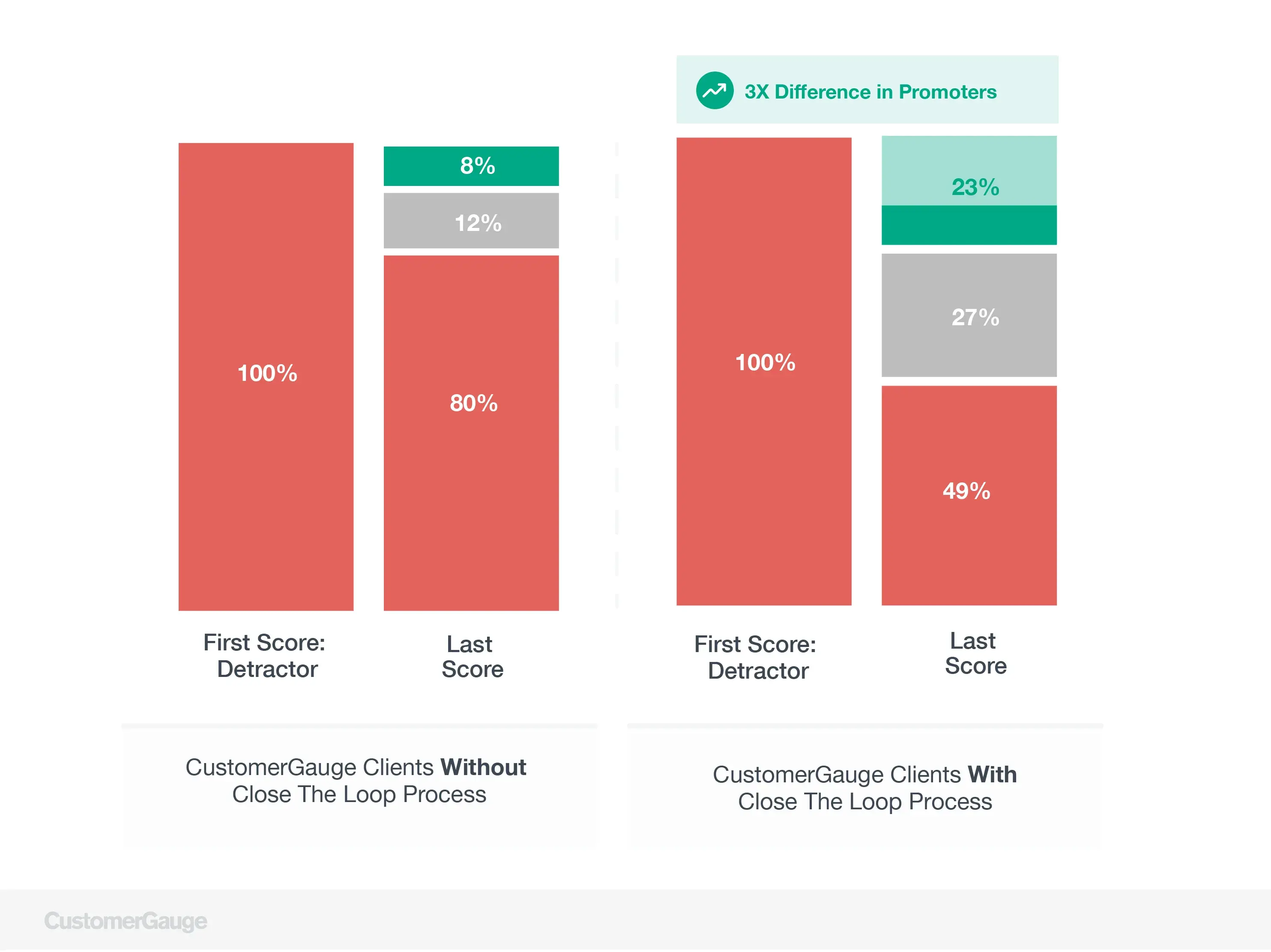
Indeed, we found that companies who closed the loop within 48 hours saw the highest increases in NPS scores.
Our customer, ICON see’s a 100% response rate on their NPS surveys. How, you ask?
“The reason that we're getting such a phenomenal return rate is that clients can see results from going through the process,” says Hickin. “We listen, we're putting plans in place and doing something about it.”
Therefore, if you are only just getting started with NPS surveying or don’t have a lot of internal bandwidth to follow up on responses and drive internal change, then start by surveying only twice per year.
Once you have solid procedures in place, and your customers are accustomed to the frequency of surveys and understand the value of taking them, you can work your way towards increasing the frequency to quarterly, which allows you the opportunity to become more agile in your customer experience program.
Should I send my relational NPS surveys to every customer at once, or spread them out?
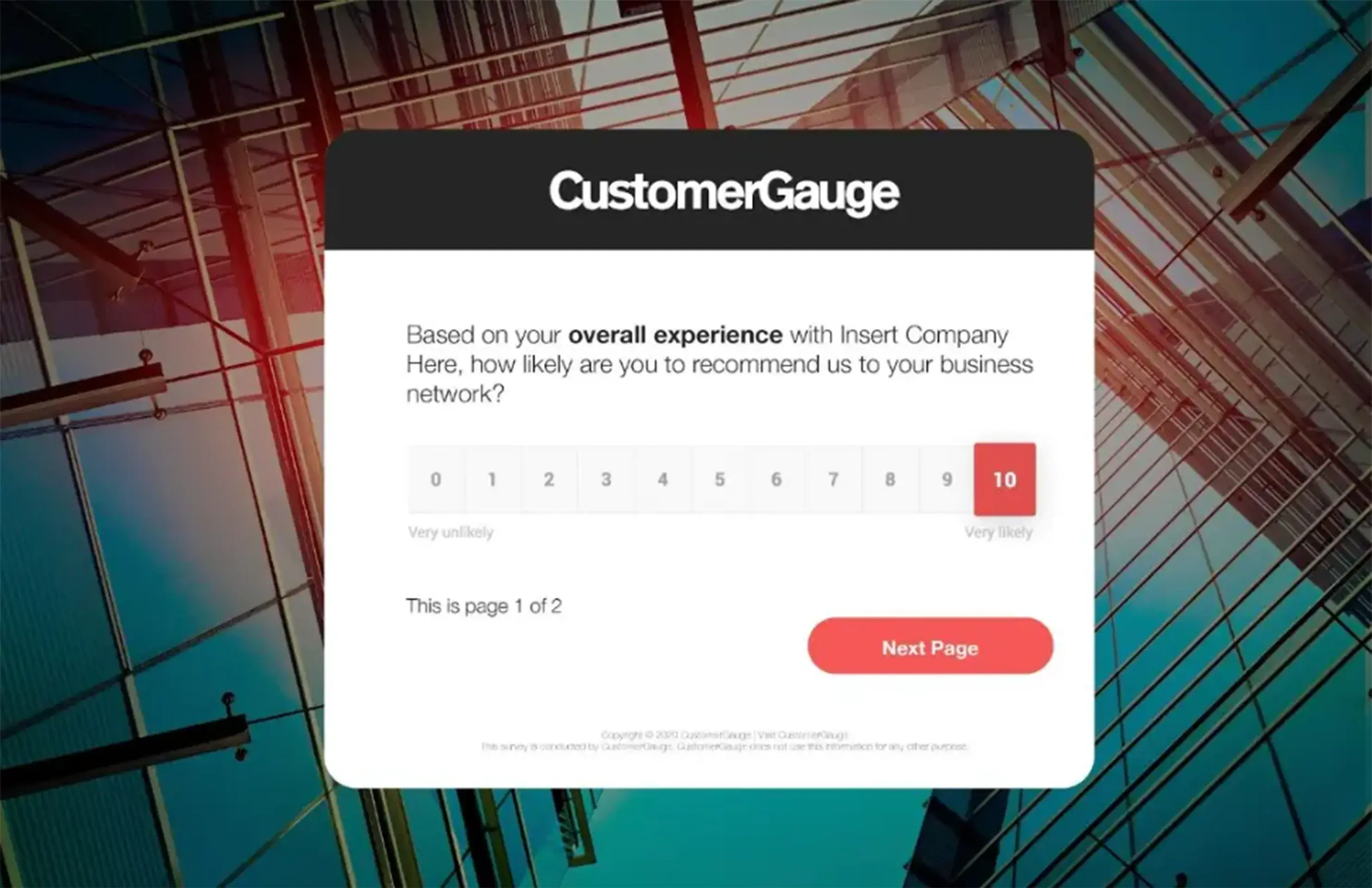
This is another one that can vary by your unique situation.
We tend to lean towards recommending spreading out the surveys over the course of the year, but there are some situations where sending them all at once would make more sense. Let’s go over the pros of each approach.
Pros of surveying everyone together include:
Easier to compile/assemble all the data and upload it all at once and be done with it
Keeps the “timing” variable consistent, by having everyone receive the survey around the same time*
Allows you to gather the feedback and data quicker, and thus, make quicker improvements and business decisions based on the feedback, without having to wait for more results
*You can overcome this depending on alternative ways of timing your surveys, as described in a few sections above
Pros of spreading surveys out over the course of the year include:
Prevents your team, especially those in charge of follow-up, from getting overwhelmed with a ton of feedback all at once, particularly if they wouldn’t be able to conduct follow-up within our best practice timelines
Provides a quicker turnaround time on gauging the effectiveness of any organizational changes you’ve made...you don’t need to wait another 6+ months or whenever you were planning on sending the next big batch of surveys to see if the changes you’ve made have been effective or not; allows your organization to be more agile
Allows you to have a steady stream of data constantly flowing in; no “breaks in the action”, no “high-tide” vs. “low-tide”
Allows you to target the survey to people at a time when providing feedback would be relevant to them (see the timing section above)
When to send an NPS survey—the ideal time of year for relational surveys
Okay, so we've established that short, frequent, quarterly surveys are best for business. But, when should you schedule those surveys to be sent to customers?
Here are three suggestions:
About 3 months before a contract is up for renewal. There’s no better time to get a pulse-check on how a customer is feeling about you than a few months before their contract is up for renewal. This will help you predict if they will renew or not. If the feedback is constructive and there are warning signs, then you can work your hardest to resolve them.
About 2-4 weeks before an important meeting or business review. By sending the surveys at this time, you are given ample opportunity to collect and gather feedback to discuss during the review.
Shortly after heavy product usage periods or periods during which many interactions have occurred. If points 1 and 2 aren’t relevant to your business, then sending in situation #3 could be targeted towards high-touch time periods, when interacting with your organization is fresh in the customer’s mind and they are more likely to provide meaningful feedback about those interactions.
When to Send an NPS survey — The Transactional NPS Survey
A transactional survey is a survey that is sent after an event has occurred, such as the purchase of a product or the resolution of a support ticket. They investigate the experience a customer has had within a touchpoint interaction, so the survey doesn’t measure loyalty but satisfaction with a specific experience.
The timing of these is often a bit simpler than the relational surveys. The most important aspect of when to send a transactional survey is to send it before too much time has lapsed since the transaction occurred, and would be remembered less clearly.
If you send your transactional survey too late, and you risk lower response rates and/or less accurate feedback.
How Frequently Should Transactional Surveys Be Sent?
Should you send transactional surveys after every interaction? I lean towards no, but I’ve heard the argument go both ways:
Pros of surveying every interaction include:
A greater amount of overall feedback
Less chance of missing out on feedback that could have ended up being very important
Getting a “full picture” of the entire customer journey or spectrum of interactions
Pros of surveying only select interactions include:
Less survey fatigue, less chance that your customers will tire of taking your surveys
Higher response rate (directly related to the point above)
Ability to focus more on each response—less likely to get overwhelmed or barraged with too much feedback to handle (something we discuss in our Acting on NPS eBook)
Easier to assess and make changes based on the feedback
When to send an NPS survey — the ideal timing
As we mentioned, you want to send your transactional NPS surveys shortly after the interaction to get fresh feedback.
Here’s some nuance to that recommendation:
0-24 hours after the transaction occurred, for things like:
Doctor’s office visits
Resolution of a support case
An appointment for things such as a repair, installation, or basic support call
0-3 days after the purchase of a product, if the product can be used or downloaded right away. Depending on the product that was purchased, you may need to allow some time to elapse for the product to be tested/used prior to requesting feedback.
7-10 days after the purchase of a product, if the product needs to be shipped. This allows sufficient time for the product to be shipped, unpacked, and used before the survey asking for feedback arrives.
What time of day to send an NPS survey to Maximize Response Rates
For both relational and transactional NPS surveys, time of day matters.
You can dig into the details of time & day a lot, but the two major factors to ensure you maximize your response rates when it comes to surveying are:
Send your surveys during the work week, especially for B2B. I’d avoid Fridays and weekends, which are days where surveys can easily be forgotten amongst a clutter of other accumulated emails that aren’t being looked at as frequently as Monday through Thursday.
Send during regular business hours, and avoid the end of the day. Avoiding the end of the day is the same as preventing the end of the week. You don’t want your survey email mixed in with handfuls of other unread emails until the next day/morning when the chance of them being forgotten about due to other, more highly prioritized emails is higher.
We also recommend avoiding surveys during the holidays.
We hope these tips help increase your response rates for your next survey send!
We've got tons and tons of tips to measure, act and grow with Net Promoter in our latest benchmarks report — you can download that free here.
Interested in learning how our product can help improve your customer experience? Contact our team for a live demo!
